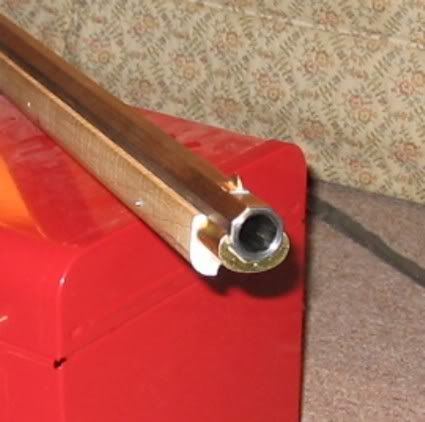Ken Rummer
40 Cal.
- Joined
- Jun 5, 2008
- Messages
- 266
- Reaction score
- 1
I have a GM 58 cal barrel that has been abused. The hook on the breech plug has had metal removed.; Looks like a rough tool was used like a chisel or a cutoff wheel, definately not a file. The underlug was also beat up. Since it won't fit well in any of my 1" TC stocks I thought if I had the breech plug and underlug replaced it may be usable.
I will not touch the breech plug but I am qualified to remove the underlug and dress up the dings with a file. This underlug is attached with two screws which I removed.
I measured the depth of both screw holes with the depth mic feature of my Frankford Arsenal vernier caliper. The measured from .150 to .160 depending on the rotation of the depth mic shaft.
The screw thread dia. is .133. Holes are 6.75 and 7.62 from the breech plug/ barrel joint.
The barrel flats are 1"
The groove diameter is .602 measured at the muzzle.
Subtracting and dividing by 2 the barrel wall is .199 thick.
For a .160 deep screw hole the wall thickness at the screw location is .039.
Thread engagement is .072 so the holes are twice as deep as they need to be.
This seems very wrong.
I would appreciate your comments.
I will not touch the breech plug but I am qualified to remove the underlug and dress up the dings with a file. This underlug is attached with two screws which I removed.
I measured the depth of both screw holes with the depth mic feature of my Frankford Arsenal vernier caliper. The measured from .150 to .160 depending on the rotation of the depth mic shaft.
The screw thread dia. is .133. Holes are 6.75 and 7.62 from the breech plug/ barrel joint.
The barrel flats are 1"
The groove diameter is .602 measured at the muzzle.
Subtracting and dividing by 2 the barrel wall is .199 thick.
For a .160 deep screw hole the wall thickness at the screw location is .039.
Thread engagement is .072 so the holes are twice as deep as they need to be.
This seems very wrong.
I would appreciate your comments.





